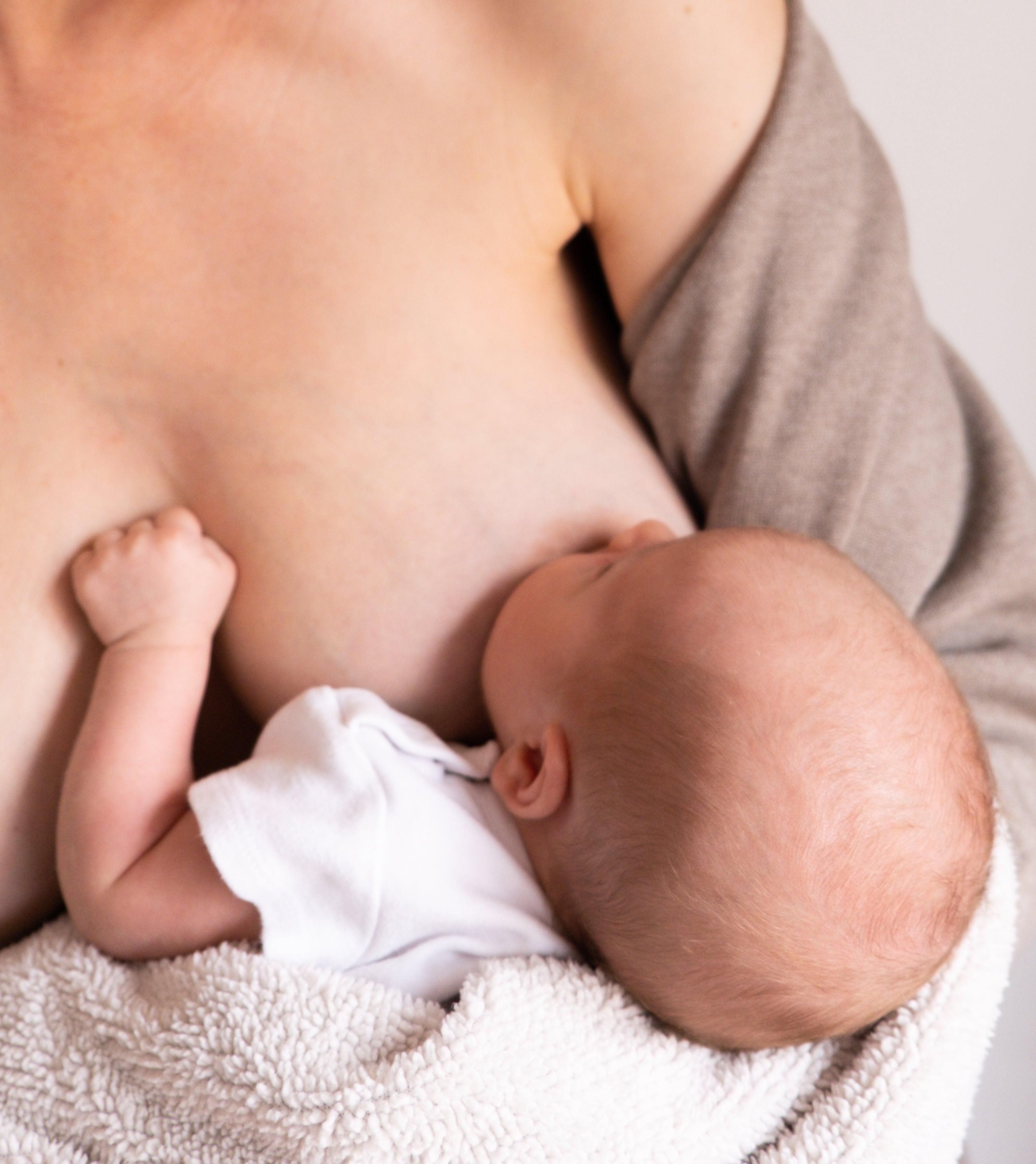By The SABI and Meke Baby
The pain of mastitis is often described as feeling like your breasts are burning from the inside out, with some mothers affirming that it can be more painful than childbirth itself. Add in a fever, chills, and sheer exhaustion, that can completely mess with the experience of breastfeeding and give rise to new anxieties during a crucial time meant for bonding with your baby. The intense pain, swelling, and exhaustion can make you feel like your body is betraying you when all you want is to give your baby the best.
Studies show that mastitis affects up to 20% of breastfeeding mothers during the first six months postpartum, and up to 10% experience it repeatedly throughout their breastfeeding journey. The pain and discomfort can be so severe that many mothers feel forced to stop breastfeeding, which can be heartbreaking when they’ve set out to give their baby the best start in life. But it doesn’t have to be this way. Understanding the early symptoms of mastitis and taking immediate action can help you manage this condition and reclaim your breastfeeding journey.
This time, we sat down with Elysia, founder of Meke Baby, who experienced mastitis firsthand as a new mum and created an innovative solution to give new mums the support they need, to tell you about the warning signs and what you can do to stay ahead of it.
What is Mastitis?
Mastitis is an inflammation of the breast tissue, usually caused by a blocked milk duct or bacteria entering the breast. It’s most common in the early months of breastfeeding, but it can happen at any time. It often starts off subtly—a bit of tenderness or a small lump—but can quickly spiral into something that feels all-consuming, generating a stress that not only intensifies the discomfort but also increases the likelihood of further clogged ducts, making it even harder to remain calm when already juggling the demands of caring for a new baby.
The key to managing mastitis is catching it early. If you ignore the signs, it can worsen quickly and may even lead to an abscess that requires medical intervention. The sooner you spot it, the easier it is to treat, so let’s talk about what you should be looking for.
Early Signs: What to Watch Out For
Mastitis can sneak up on you, so knowing the early warning signs is crucial. The faster you recognise them, the sooner you can take action. Here’s what to watch out for:
- Breast Pain or Tenderness: It often starts as a sore or tender spot on your breast that feels warm to the touch. You might notice a small lump, or your breast might feel harder in one area, like there’s something blocking the milk flow.
- Redness and Warmth: Look for red patches or areas that feel warmer than the rest of your breast. It’s a sign that inflammation is setting in.
- Flu-Like Symptoms: Mastitis often comes with body aches, chills, and even a fever, making you feel like you’re coming down with the flu, except it’s your breast that’s hurting the most.
- Swelling or Hardness: Your breast might look swollen, feel engorged, or even be noticeably bigger on one side. This is usually due to a blocked duct that needs clearing.
- Fatigue and Exhaustion: Feeling unusually tired and run down? Mastitis can drain your energy, leaving you feeling completely wiped out.
What to Do If You Suspect Mastitis and What Really Works?
So, you’ve noticed the red flags of mastitis—now what? The good news is there are several things you can do right away to ease the pain and get back on track. The first and most important step is to keep the milk flowing, even though it can be painful. Keep breastfeeding or pumping frequently, starting on the sore side to help clear any blockages. A baby is the best way to clear a blockage, so let them help you! If direct feeding feels too difficult, try pumping or hand expressing to relieve the pressure. Don’t be afraid to adjust your feeding position or latch to make it more comfortable; every little bit helps.
Ensure the baby’s nose is aligned with the nipple to encourage a deep latch, with the chin pressed into the breast and the nose free. Rotate breastfeeding positions frequently, directing the baby's chin or nose towards the blocked area to maximize milk drainage, and consider the "dangle" feeding position, where gravity aids in clearing blockages.
If direct feeding feels too difficult, try pumping or hand expressing to relieve the pressure. Don’t be afraid to adjust your feeding position or latch to make it more comfortable; every little bit helps.
Heat vs. Cold?
For years, the go-to advice for treating mastitis was to apply heat—warm compresses, hot showers, and heated gel packs were thought to be the magic remedy to relieve pain and get milk flowing. And while heat can feel soothing in the moment, more recent science suggests that it is not a good approach when it comes to tackling the inflammation.
Traditionally, heat was believed to help by relaxing the breast tissue, softening any hard spots, and encouraging milk flow. But here’s the thing: while heat can temporarily ease the discomfort and help with milk letdown, it can also increase inflammation and swelling. That’s because mastitis isn’t just about a clogged duct; it’s an inflammatory condition.
Cold therapy, on the other hand, has been shown to be more effective. Using ice packs or chilled gel packs can significantly reduce inflammation, ease pain, and calm the affected area. Applying cold compresses for 10-15 minutes between feeds helps numb the soreness and supports faster recovery, offering a more lasting solution.
Armed with this knowledge, it’s clear that a shift in how we approach mastitis can make all the difference. These extra steps will help you effectively manage the pain and get back on track.
- Gently massaging the sore area while feeding or pumping can also make a big difference. Use your fingers to apply light pressure around the blocked duct, moving toward the nipple to help get things moving.
-
Milk Warmers are your allies for reducing stress: They ensure your baby’s milk is always at the right temperature, making feedings less stressful when breastfeeding is too painful. By using a milk warmer, you can provide nourishment while allowing your body to heal, easing the pressure of direct breastfeeding. It’s a simple tool that offers comfort and peace of mind, helping you manage mastitis without sacrificing your breastfeeding goals.
- Staying hydrated and getting as much rest as possible is also key. Mastitis can take a toll on your energy, so make sure you’re drinking plenty of water and giving yourself permission to rest, even if it means asking for help with other tasks. Don’t underestimate the power of simple self-care: a nap, a warm cup of tea, or even just sitting down with your feet up can help your body fight off the infection.
- Speaking of tea, herbal remedies like those containing fenugreek, lavender, and chamomile can support milk flow and reduce inflammation naturally. Sipping on a warm herbal blend can be both a comforting and effective way to support your recovery. Our Breastfeeding Herbata is a gentle yet powerful way to support your body and maintain your breastfeeding goals.
- Implement cabbage leaves anti-inflammatory and cooling remedies: Apply cold cabbage leaves that you stab with a fork to release the phytochemical that is anti- inflammatory to the affected breast for 20 minutes several times a day. This helps reduce pain, swelling, and inflammation.
- Opt for soft bras made from breathable, natural fabrics like cotton or moisture-wicking materials. This helps keep the breast area dry and reduces irritation, which is crucial if you have cracked or sore nipples. Remember that tight bras can put pressure on the breast tissue and exacerbate blocked ducts.
However, if your symptoms don’t improve or if you develop a high fever, it’s crucial to reach out to your healthcare provider. The combination of milk stasis and inflammation creates an environment where bacteria can thrive, and most times, antibiotics are necessary to clear up the infection. Getting the right treatment sooner rather than later can prevent things from getting worse.
Don’t Let Mastitis Steal Your Joy
All too often, the early warning signs of mastitis are overlooked and many mothers are left to navigate this painful experience without adequate medical guidance or support. This vulnerability to severe pain and complications is why early recognition and action are vital.
Understanding the first signs of mastitis and knowing how to respond can make all the difference, turning a potentially overwhelming situation into a manageable one. By recognising the early signs, acting quickly with supportive solutions, you can manage mastitis effectively and continue to nourish your baby in the best way possible.
Breastfeeding is meant to be a time of connection and joy, not pain and frustration. Don’t settle for a painful experience—take charge of your health, support your body with natural remedies, and keep the breastfeeding bond strong. Your journey is worth fighting for, and with the right tools and support, you can navigate the challenges of mastitis and enjoy a fulfilling breastfeeding experience.
















